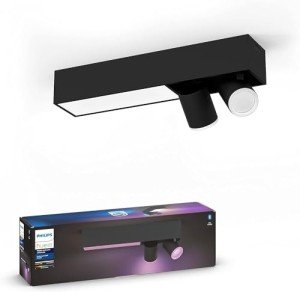Interior Lighting in the UK: A Comprehensive Guide
Interior lighting plays a vital role in developing an environment, boosting functionality, and revealing individual style within homes and organizations. In the UK, where the weather can be unforeseeable, reliable lighting is not only about aesthetics but also about making areas feel warm, inviting, and useful. This short article explores numerous aspects of interior lighting, encompassing types, trends, tips, and regularly asked questions.
Comprehending the Importance of Interior Lighting
Lighting is typically thought about the backbone of interior design. It affects state of mind, performance, and the viewed size of areas. The best lighting can:
- Enhance the architectural features of a room.
- Emphasize artwork and decoration.
- Improve safety and security.
- Impact performance in work spaces.
- Produce a comfortable atmosphere for relaxation.
Types of Interior Lighting
Effective lighting style generally integrates three primary types of lighting: ambient, job, and accent.
1. Ambient Lighting
This is the main source of light in a room, offering overall lighting. Typical sources consist of:
- Ceiling-mounted fixtures
- Chandeliers
- Recessed lighting
- Soft wall sconces
Ambient lighting creates a structure from which other lighting types can build on.
2. Task Lighting
Task lighting concentrates on specific locations to assist in activities such as reading, cooking, or working. This type of lighting assists to lower eye stress and can dramatically impact performance. Common sources consist of:
- Desk lamps
- Under-cabinet lights in cooking areas
- Checking out lamps next to beds
- Track lighting targeted at work surfaces
3. Accent Lighting
Accent lighting includes drama and highlights particular items or locations, such as art work or architectural functions. This type of lighting can produce visual interest and depth in a space. Sources consist of:
- Picture lights
- Decorative lamps
- Uplighters
- LED strip lights along racks
Using a combination of these lighting types can lead to a healthy and multifunctional area.
Popular Lighting Trends in the UK
The interior lighting landscape in the UK continues to progress, influenced by design trends, innovation, and customer preferences. Here are some popular trends to enjoy:
- Smart Lighting: The arrival of smart innovation has changed how individuals handle lighting in their homes. Smart bulbs and systems like Philips Hue permit users to manage brightness and color temperature by means of their mobile phones.
- Minimalist Designs: Sleek, simple designs that blend perfectly with interiors are controling the market. Pendant lights with delicate frames, LED strips, and geometric shapes are particularly stylish.
- Industrial Lighting: This pattern showcases raw, unwrapped materials. Metal fixtures and Edison bulbs provide a vintage touch that is both stylish and practical.
- Eco-Friendly Options: With increasing awareness of sustainability, lots of consumers are turning to energy-efficient LED alternatives and fixtures made from sustainable materials.
Tips for Effective Interior Lighting Design
Designing an effective lighting plan needs thoughtful consideration of different aspects. Here are some tips:
- Consider the Purpose of Each Room: Every area has a different function. Consider what activities will occur and what kind of lighting will support those activities.
- Layer Lighting: Employ multiple kinds of lighting within a room to produce depth and versatility. Integrate ambient, task, and accent lighting to improve both visual appeals and performance.
- Use Dimmers: Dimmers enable control over brightness levels, enabling users to change lighting according to mood and time of day.
- Include Natural Light: Make the most of natural source of lights like windows. Usage light, reflective colors for walls and furnishings to take full advantage of brightness.
- Believe About Color Temperature: Different color temperature levels (determined in Kelvins) produce different environments. Warmer temperatures (around 2700K-3000K) are comfortable, while cooler temperature levels (4000K+) lend a more clinical or energetic feel.
Interior Lighting Mistakes to Avoid
To develop a well-lit area, it's important to prevent common lighting pitfalls. Here are some mistakes to see for:
- Underestimating Wattage: Insufficient wattage can result in dim, unwelcoming spaces.
- Neglecting Scale: Fixtures that are too small for a room can keep an eye out of location, while extra-large fixtures can overwhelm an area.
- Over-reliance on Ceiling Lights: Relying entirely on overhead lighting can create uninviting shadows; balance with additional lighting types.
- Poor Placement: Misplaced lights can produce areas that are too intense or too dark. Plan positionings attentively.
FAQ Section
1. What is the difference in between warm white and cool white light?
Warm white light (2700K to 3000K) produces a relaxing, welcoming atmosphere, best for living spaces and bedrooms, while cool white light (4000K to 5000K) is more fit for work spaces as it enhances concentration and clearness.
2. How can I take full advantage of natural light in my home?
To make the most of natural light, use light-colored walls, strategically location mirrors to reflect light, and go with sheer window coverings that permit sunlight to go through.
3. How do I pick the ideal light?
Consider the size of your area, the design of your decor, and the function of the area. Make sure the scale of fixtures matches the room and matches the total visual.
4. Are LED lights much better than traditional bulbs?
Yes, LED lights are more energy-efficient, have a longer life-span, and can provide a series of color temperature levels, making them a more sustainable lighting alternative.
5. What should Decorative Lighting UK do if certain locations of my room remain too dark?
Consider adding extra job or accent lighting to brighten those areas. Floor lamps, wall sconces, and even tactically put table lamps can assist reduce dark spots.
Interior lighting is a necessary aspect of home and company style throughout the UK. Comprehending the various types, existing trends, and best practices can help property owners in creating spaces that are not only trendy but also practical. With thoughtful consideration and planning, reliable lighting can change any environment, boosting both atmosphere and usability for several years to come.

